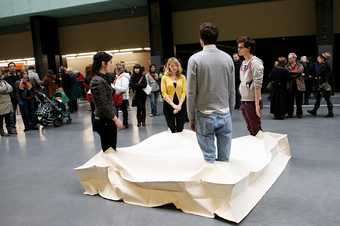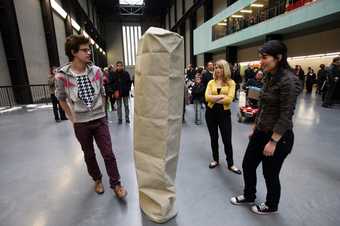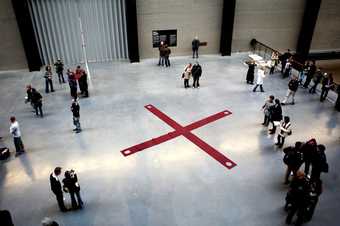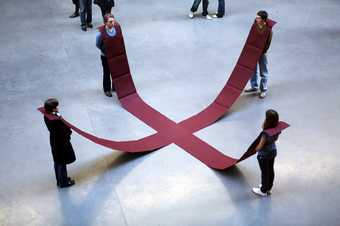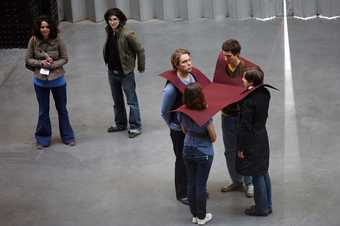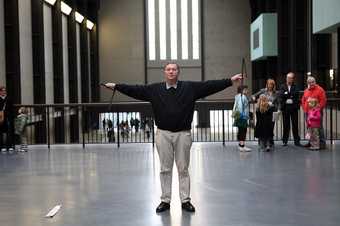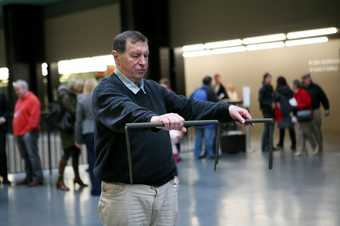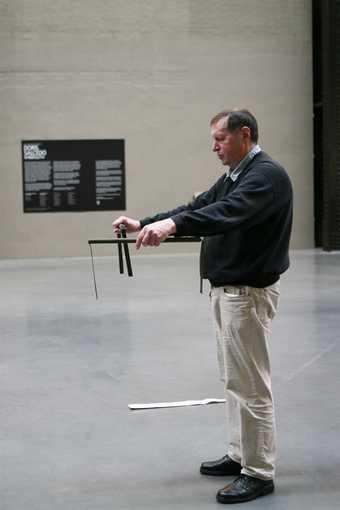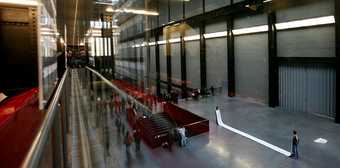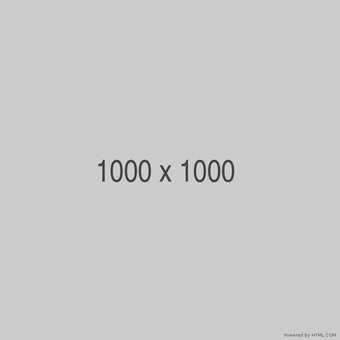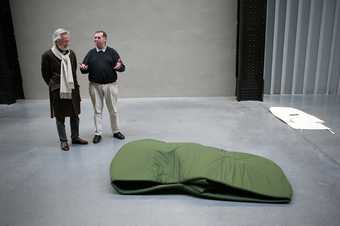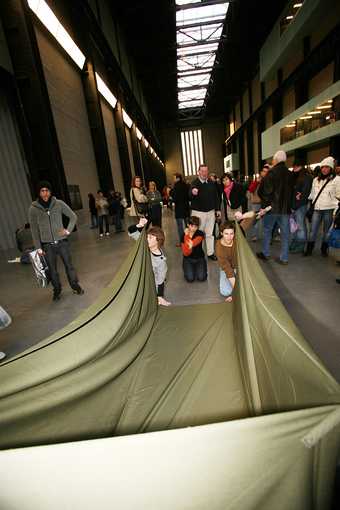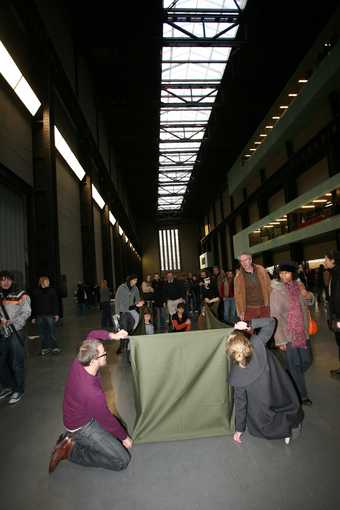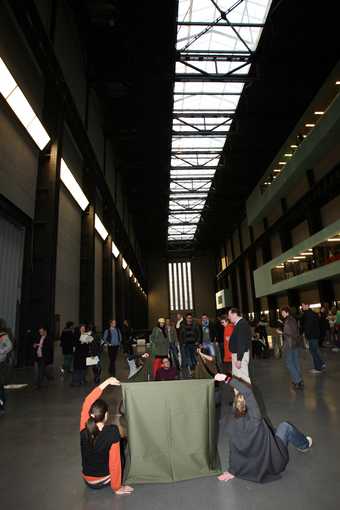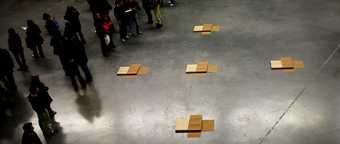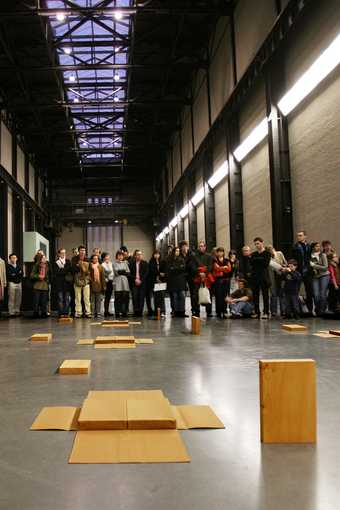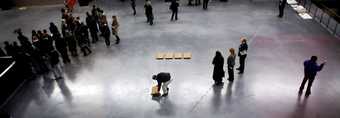German artist Franz Erhard Walther oversaw the activation of a number of his fabric-objects at Tate Modern in 2008 as part of UBS Openings: Live – The Living Currency. Werksatz consists of around fifty wearable or usable material sculptures, designed and sewn by Walther between 1963 and 1969. During 26 and 27 January 2008 a number of volunteers activated the sculptures, demonstrating the demands they made on the body, as well as the possible relationships the objects prompted between multiple users. The use of body in performance art provided the central theme of The Living Currency programme, and like Walther’s Werksatz, most of the artworks included were not supposed to remain static but rather were to come into being through the interrelation of bodies and materials.
The pieces in Werksatz were examples of some of Walther’s early explorations into participatory and activated sculptures. They consisted of fabric objects, with openings, fastenings, or straps which meant that volunteers could wear or use the object, individually or in a collective action. Sometimes these were worn over the head, others involved stepping into or onto fabric structures, and one demonstrated by Walther himself consisted of tying a wooden pole to his left arm with fabric straps and standing still and upright. While a group of volunteers activated the pieces at Tate, Walther had originally designed them to be used or worn by any exhibition visitors. Some of the pieces required a small group of participants, and the activation process depended upon their ability to collectively create balance within the structure. When not in use, the works were either wrapped and neatly stored, or laid out on the Turbine Hall bridge. At different points during the weekend, new works were revealed, activated, and then returned to their dormant state, creating a lifecycle for the work.
Walther was interested in exploring the negotiation between dormant and active states in what he called his used objects. With this terminology – alluding to the idea that the objects were to be used – he signalled how they should change materially and also how they might alter the body’s behaviour. This method of creating an artwork – his design, but also the necessity for a body to complete the work – arose out of an interest not in what material is but in what it can do. He saw this as a transformative process. Rather than viewing the static objects as incomplete, or unfulfilled, however, it is possible to read them as the same artwork, in a different state. The static form becomes the ‘stored form’, in which the potential for what the artwork might be is contained within the material of the piece. By claiming a life for the static piece as an artwork, Walther also opened up a space for imagination to become part of the transformative artistic process. Furthermore, by laying out the works for observation, before using volunteers to activate them, Walther allowed the viewers space in which to imaginatively explore what the activated work might look like, and to think about their own body in the artwork.
The Living Currency was a two-day exhibition, programmed as part of UBS Openings: Live, a series of bi-monthly performance events celebrating contemporary cultural practice at Tate Modern. Co-curated by Pierre Bal-Blanc in collaboration with Tate’s Alice Koegel and Vanessa Desclaux, The Living Currency took the 1970 text La Monnaie vivante by the French writer and painter Pierre Klossowski (1905–2001) as its starting point. In the text Klossowski developed an alternative model of economic exchange, which places the body at the centre of the economy, understanding it as the only valid form of currency. At Tate, The Living Currency sought to address this notion of the body as a form of value and a means of exchange in a number of ways, with particular focus on historical and recent approaches to the body as a focus of performance in both the visual arts and contemporary dance. Along with Franz Erhard Walther, the exhibition featured works by Tania Bruguera, Prinz Gholam, Sanja Iveković, David Lamelas, Isidoro Valcárcel Medina, Santiago Sierra, Annie Vigier and Franck Apertet (les gens D’Uterpan) and Lawrence Weiner.
Acatia Finbow
July 2016

